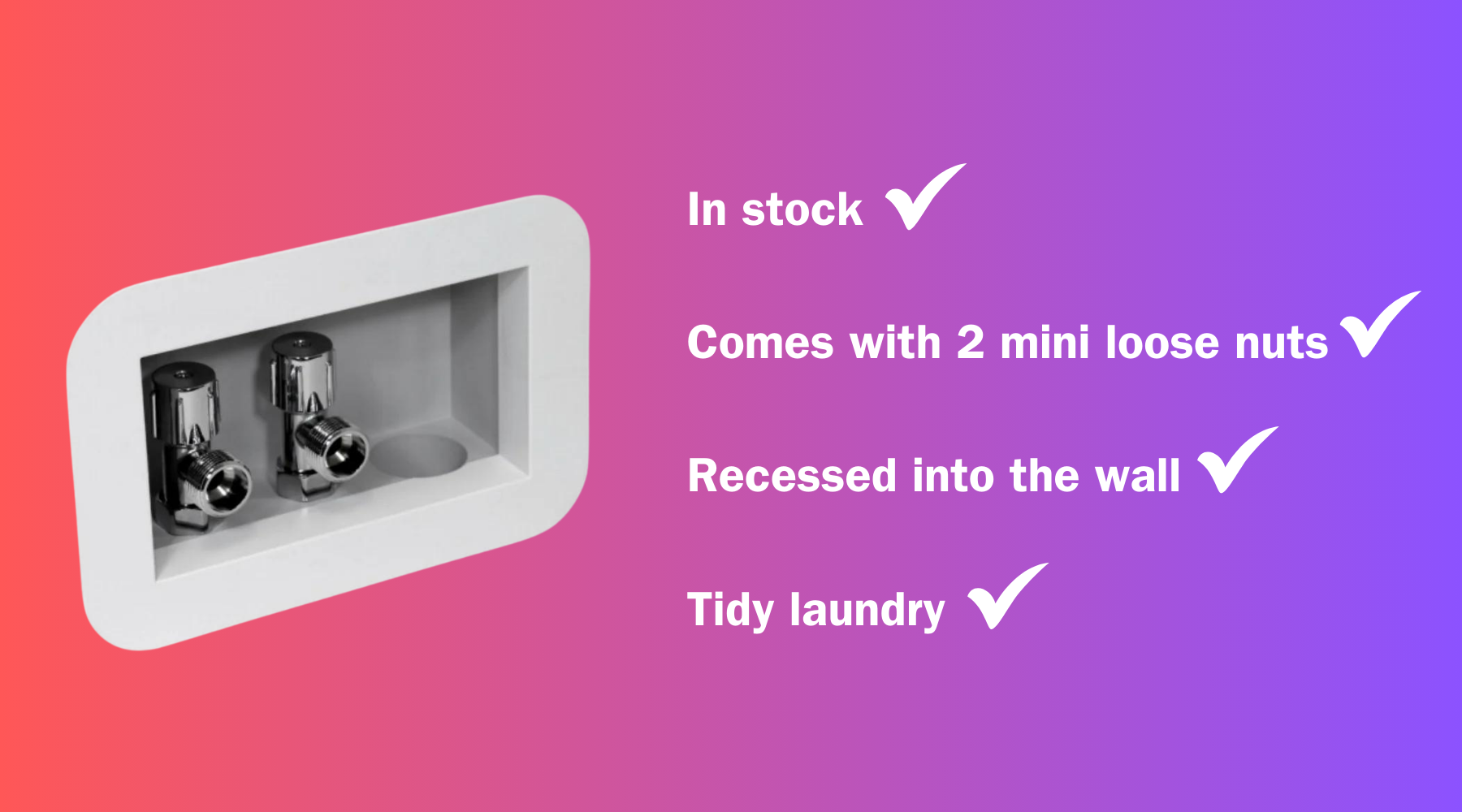Renovating or building a laundry? We've compiled all you need to know about laundry outlet boxes right here.
Interested? Shop now right here > https://www.plumbersupplies.com.au/products/laundry-outlet-box
How high should a laundry outlet box be?
The ideal height for a laundry outlet box in Australia is between 107 to 122 cm from the floor. This height allows easy access to the hoses and prevents strain on plumbing connections. It’s important to comply with Australian building codes, which may have specific requirements for your region.
How much does it cost to install a washing machine outlet box?
In Australia, the cost to install a washing machine outlet box generally ranges from $150 to $500 AUD. This estimate includes both the outlet box itself and labour costs. The price can vary depending on the complexity of the job, the need for additional plumbing work, and local labour rates.
Does a washing machine outlet box need to be vented?
Yes, in Australia, a washing machine outlet box should be vented. Venting is essential as it allows air to escape from the drainpipe, preventing vacuum lock and ensuring efficient water drainage. This venting can typically be integrated into the home's existing plumbing vent system.
What is the purpose of a washing machine outlet box?
A washing machine outlet box serves as a central hub for connecting water supply lines and the drain hose. It provides a safe, tidy connection point for your washing machine’s water and drainage, helping to prevent leaks and protect your home from water damage. It also keeps plumbing connections neatly organised within the wall.
What type of outlet does a washing machine need?
In Australia, a washing machine typically requires a standard 240-volt, 10-amp General Power Outlet (GPO). For modern washing machines, a grounded outlet is essential for safety.
Does a washing machine outlet need a trap?
Yes, a washing machine outlet requires a P-trap in the drainage line. The P-trap prevents sewer gases from entering your home by maintaining a water seal in the drainpipe. It’s an essential component of the plumbing system, ensuring proper hygiene and preventing unpleasant odours.

